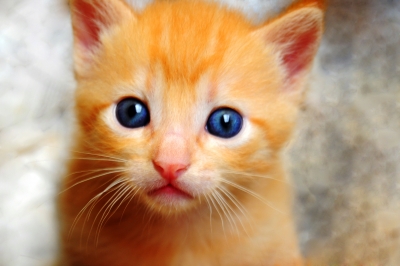Guide for Grooming Cats

Guide for Grooming Cats
Although most cats do the majority of their own grooming, all cats can benefit from the help of their owners to look their very best and to stay healthy. The amount of grooming that your specific cat needs depends on the cat’s habits and the cat’s coat. The goal of grooming is to provide the cat with a clean coat that is pleasant to the smell and to the touch and to keep the cat’s eyes, nails, and ears clean and in good shape. While the cat tends to most of this naturally, he can still use some help staying all picture “purr-fect” for you. This is particularly true if you have a cat with long fur, like a Himalayan or Persian cat.
Cat Grooming Guide: Eyes
Cat’s eyes must be kept very clean or bacteria can build up in the eye, causing ulcerations or infection. All cats produce tears, although some cats have trouble with tear drainage due to a crimped or narrowed nasolacrimal duct or a shallow tear duct that is located at the corner of the eye. Cats with this condition will need to have their faces watched each day. This is best accomplished with a warm, wet cloth. For particularly bad cases of “matting” of the eye, you can also lubricate the eye with contact lens solution and then wipe away the matting, or hold a wet compress to the dried substance around the eye to loosen it up and then wipe it away.
Cat Grooming Guide: Coat
Cats have an undercoat and an outer coat of fur. When the cat’s coat is clean, it will look good to you and it will feel good to kitty. One hallmark of a clean coat is hairs that separate. If coat hairs stick together, the coat is not properly groomed. You will need to comb your cat daily to keep its hair from becoming matted, especially if the coat is long. Ask your veterinarian to recommend the right type of brush or comb for your cat’s coat. As mentioned before, the cat will do most of the work of keeping its coat clean itself, but you can help out with a twice monthly bath for odor control and flea control. If your cat really hates the water (most cats are not fond of water at all), bathing them more often to get them accustomed to it is a smart move that will save you a lot of trouble down the road. Bathing the cat requires very little in the way of supplies. You’ll need a large towel, special cat shampoo with conditioner, cotton balls, a wash cloth, and a hair dryer. The cotton balls should be stuffed in the cat’s ears to keep water from seeping inside. Wet your cat down using warm water (not hot). Work the shampoo in, and then rinse. Use the low heat of a blow dryer to brush your cat and dry its fur.
Cat Grooming Guide: Ears
Cleaning the ears out is next. Use clean cotton balls or cotton swabs to clean the ear. Fold the ear back. Wipe gently with the cotton ball or swab, making sure to clean the folds where earwax tends to build up. If you notice any foul odor or excess debris in the ear, be sure to consult your veterinarian. Check your cat for signs of ear mites during each bath.
Cat Grooming Guide: Nails
Your cat has five toes on each of his front paws, but only four on the back paws! A cat’s claws, as you know, are retractable. Keeping your cat’s nails trimmed each week is a good idea, especially if you worry about your cat scratching someone in your family or ruining your furniture by turning it into a “scratching post”. Nail trimmers or cat nail scissors can make easy work of trimming kitty’s nails. When trimming nails take the cat’s paw in your hand and trim one toe at a time, being careful not to cut the nails too short. A machine like Pedi-Paws is a good investment that allows you to trim your cat’s nails precisely without the worry of hurting your cat and can be used on dogs, too.
Photo by: Carlos Porto



